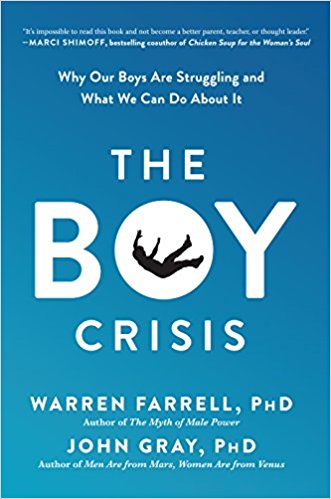![]()
Call to fight child poverty
Report urges $18 billion boost Also recommends raising taxes
The Toronto Star, LAURIE MONSEBRAATEN, STAFF REPORTER, May 5, 2004.
Ottawa should consider using future budget surpluses and modest tax increases to inject $18 billion annually into new services and income supports to fight child poverty, says a report to be released on Parliament Hill today.
With the country's child poverty rate stuck at about 16 per cent for the past 30 years, Ottawa needs to adopt a comprehensive, well-financed social investment strategy that includes labour market initiatives, income security, housing and early childhood education and care programs, argues the report by Campaign 2000.
"There are no easy, low-cost solutions to eliminate child poverty," says the national group which represents more than 90 social service, advocacy, labour and faith organizations dedicated to making elected officials live up to their promises to support children.
Specifically, the report calls on Ottawa to:
Work with provincial governments to raise the minimum wage to $10 an hour by the end of 2007, beginning with a raise to $8 by the end of 2005 and $9 by the end of 2006.
Restore eligibility for Employment Insurance by introducing a uniform 360-hour qualifying requirement, and extend the EI benefit period to one year to protect all earners, including low-income parents, when the economy is in recession.
End the clawback of child benefits from people on welfare and raise benefits to a maximum of $4,900 per child by 2007. This would increase Ottawa's annual $8 billion spending on the program by $10 billion annually.
Take a leadership role with the provinces to develop a national system of early childhood education and care for all families, and increase annual child-care funding to the provinces by $6 billion by 2008.
Invest at least $2 billion annually over the next five years to build 25,000 new affordable homes per year.
Almost 15 years after a 1989 all-party parliamentary resolution to end child poverty in Canada by 2000, the problem persists, says the report, called "Pathways to Progress: Structural Solutions to Address Child Poverty." Although Ottawa has taken some steps to address the problem, such as introducing the child tax benefit and signing federal-provincial agreements on affordable housing, early childhood development and child care, none of the measures is adequately funded or broad enough in scope, it adds.
"The problem is the reluctance on the part of Canada's governments to act on lessons learned," the report says.
It points to evidence suggesting public support for tax cuts is waning and that Canadians may be willing to pay for the broader measures it proposes. The report argues that Canada's taxation level is light compared with most OECD countries. "We think there is room for modest tax increases," said Laurel Rothman, national co-ordinator of Campaign 2000 and a co-author of the report.
A January Ekos Research poll shows broad public support for governments to spend budget surpluses on social programs rather than pay down debt. But it would be "quite a stretch" to say Canadians would be prepared to pay higher taxes to fight child poverty, said Ekos president Frank Graves.
"Child poverty is a very high priority for Canadians and has been for some time.But there's a very cluttered list of worthy causes out there and $18 billion a year is a big ticket."
The report says Ottawa should consider paying for the strategy through a 1 per cent increase in income tax rates to provide $5 billion annually; new tax rates for high earners to raise about $2 billion annually; and a 1 per cent increase in the GST to yield about $4 billion annually.
Budget surpluses — which have averaged about $7 billion annually over the past five years — should also be considered for investment in the plan, it says.
TEDx Dr Warren Farrell
TEDx - The Boy Crisis: Why Our Boys Are Struggling and What We Can Do About It
One of the foremost speakers and thinkers on gender issues
It's a crisis of education. Worldwide, boys are 50 percent less likely than girls to meet basic proficiency in reading, math, and science.
It's a crisis of mental health. ADHD is on the rise. And as boys become young men, their suicide rates go from equal to girls to six times that of young women.
It's a crisis of fathering. Boys are growing up with less-involved fathers and are more likely to drop out of school, drink, do drugs, become delinquent, and end up in prison.
It's a crisis of purpose. Boys' old sense of purpose-being a warrior, a leader, or a sole breadwinner-are fading. Many bright boys are experiencing a "purpose void," feeling alienated, withdrawn, and addicted to immediate gratification.
So, what is The Boy Crisis? A comprehensive blueprint for what parents, teachers, and policymakers can do to help our sons become happier, healthier men, and fathers and leaders worthy of our respect.

Why boys are in trouble
Boys have been painted as the bad guys in the push to encourage girls to succeed, leaving many young men feeling confused and alienated, wondering what they did wrong
The Associated Press
January 5, 1999
According to psychologist and author William Pollack, 'sports are the one arena in which many of society's traditional strictures about masculinity are often loosened, allowing boys to experience parts of themselves they rarely experience elsewhere.'
When Harvard Medical School psychologist William Pollack administered a test to a group of 150 teenaged boys a few years ago, the results were shocking.

The Boy Crisis Book
The Boy Crisis: Why Our Boys Are Struggling and What We Can Do About It
Authors- Waren Farrell PhD and John Gray PhD
What is the boy crisis?
It's a crisis of education. Worldwide, boys are 50 percent less likely than girls to meet basic proficiency in reading, math, and science.
It's a crisis of mental health. ADHD is on the rise. And as boys become young men, their suicide rates go from equal to girls to six times that of young women.
It's a crisis of fathering. Boys are growing up with less-involved fathers and are more likely to drop out of school, drink, do drugs, become delinquent, and end up in prison.
It's a crisis of purpose. Boys' old sense of purpose-being a warrior, a leader, or a sole breadwinner-are fading. Many bright boys are experiencing a "purpose void," feeling alienated, withdrawn, and addicted to immediate gratification.
So, what is The Boy Crisis? A comprehensive blueprint for what parents, teachers, and policymakers can do to help our sons become happier, healthier men, and fathers and leaders worthy of our respect. Read More ..

Health Canada Publication
The Invisible Boy: Revisioning the Victimization of Male Children and Teens
"... the existence of a double standard in the care and treatment of male victims, and the invisibility and normalization of violence and abuse toward boys and young men in our society.
Despite the fact that over 300 books and articles on male victims have been published in the last 25 to 30 years, boys and teen males remain on the periphery of the discourse on child abuse.
Few workshops about males can be found at most child abuse conferences and there are no specialized training programs for clinicians. Male-centred assessment is all but non-existent and treatment programs are rare. If we are talking about adult males, the problem is even greater. A sad example of this was witnessed recently in Toronto. After a broadcast of The Boys of St. Vincent, a film about the abuse of boys in a church-run orphanage, the Kids' Help Phone received over 1,000 calls from distraught adult male survivors of childhood sexual abuse. It is tragic in a way no words can capture that these men had no place to turn to other than a children's crisis line."
American Psychological Association
Dating Violence Statistics in the United States
Nearly one in 10 girls and one in 20 boys say they have been raped or experienced some other form of abusive violence on a date, according to a study released Sunday at the annual meeting of the American Psychological Association.
![]()
The mean T-shirt: From the Stupid Factory
Todd Goldman says his popular boy-bashing T-shirts are simply funny.
So why are retailers having second thoughts? Read More ..

Why boys are in trouble
Boys have been painted as the bad guys in the push to encourage girls to succeed, leaving many young men feeling confused and alienated, wondering what they did wrong
The Associated Press
According to psychologist and author William Pollack, 'sports are the one arena in which many of society's traditional strictures about masculinity are often loosened, allowing boys to experience parts of themselves they rarely experience elsewhere.'
When Harvard Medical School psychologist William Pollack administered a test to a group of 150 teenaged boys a few years ago, the results were shocking.
![]()
Where the boys are
The Globe and Mail
February 1, 2003
Academically, boys across the country are lagging behind the girls, but a Montreal public school has seen dramatic improvement by separating the sexes in classes. It allows teachers to tailor curriculum and style to suit each sex. The result? The number going on to college has nearly doubled. INGRID PERITZ reports
MONTREAL -- The teenage girls at James Lyng High School like to flirt with boys. They like to tease them, joke with them, even date them sometimes. But attend class with them? As the giggling girls in one math class this week might say, "Gross."
Luckily, they don't have to. Coed James Lyng splits boys and girls up at the classroom door. The division of the sexes is credited with helping turn a faltering inner-city high school into an education success story.


